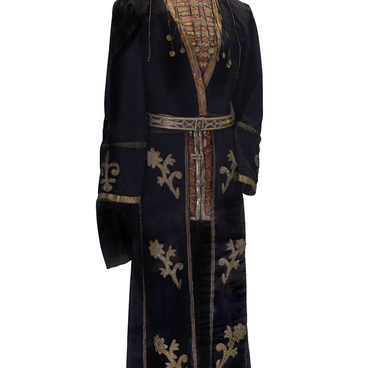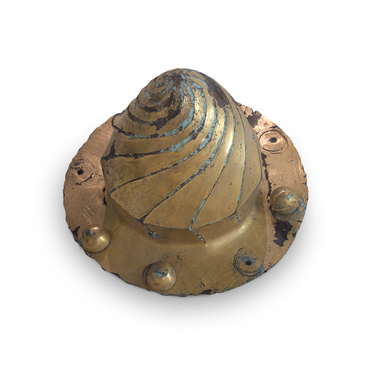The Museum of the History of the Resort City of Sochi displays an Adyghe women’s cap made of black velvet, embroidered with gold and adorned with pendants made of Arab coins.
The headdress of Adyghe women varied in shape depending on the period of a woman’s life. Girls could either forgo a headdress or wear a simple headscarf, but upon reaching marriageable age, they donned the so-called golden maiden cap, which was worn until the birth of their first child. This cap featured a hard base made of cardboard or leather, covered with fabric, and included a high, stiff band decorated with gold or silver galloon or embroidery. The cap also had a fabric lining and a rounded, conical, or flat top made of cloth or velvet, often embellished with galloons and sometimes adorned with silver bobble ornaments on top. Interestingly, the Circassians valued silver more than gold. These headdresses were quite expensive, and in some Adyghe tribes, only members of the nobility could afford them.
Two main types of decoration can be distinguished on Adyghe headdresses. The first features galloons and sewn-on embroidery, and the second — satin stitch embroidery. The galloon-decorated hats are most typical of the Adyghe people. The headdresses also varied in height, with the tallest being the oldest variety, prevalent until the late 19th century. From the mid-19th century onwards, lower hats were worn, referred to as Crimean, Tatar, or Ossetian, suggesting they were borrowed from other cultures. The final style was a low, “slanted” hat worn tilted to the side and secured with a chin cord. A thin silk scarf was draped over the hat, with the end wrapped around the neck. After a woman’s wedding, her mother-in-law presented her with an embroidered plait. The headdress worn after the birth of the first child consisted of a small, dark-colored scarf that completely covered the hair. For the birth of a child, a young woman received a dress and shawl from her father.
A change of headdress signified the transitions of adolescence, puberty, and the journey to motherhood. This symbolic change was performed by the husband’s father, signifying that the daughter-in-law had officially become a member of the new family.


